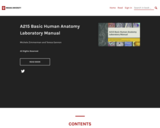
This is a lab manual for Basic Human Anatomy.
- Subject:
- Anatomy/Physiology
- Life Science
- Material Type:
- Activity/Lab
- Provider:
- Indiana University
- Author:
- Michele Zimmerman
- Teresa Gannon
- Date Added:
- 10/19/2020

This is a lab manual for Basic Human Anatomy.
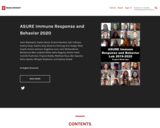
Our class is part of Arts and Sciences Undergraduate Research Experience (ASURE) at Indiana University Bloomington. This program, which is part of the College of Arts and Sciences, includes a two-semester lab experience where students design and conduct their own authentic research projects. All of the projects described in this eBook were designed and carried out by small groups of students in their first through second year of college as part of their course work in the ASURE Immune Response and Behavior Lab. The ASURE class of 2019-2020 certainly faced some unique challenges. In the spring of 2020, we were abruptly sent home to continue our coursework remotely. This interruption reduced the students’ time to collect data in the lab, but gave them the opportunity to learn R and other data analysis skills. In the fall of 2020, all of the students were able to return to campus and continue work on their projects, though there were several interruptions as students were forced to isolate and/or quarantine. Nevertheless, the students were very dedicated and persisted in their work, which is evident in their final projects.
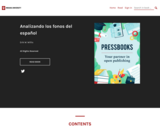
Este es un libro que pretende presentar de manera muy básica los sonidos del español con audios y ejercicios para practiar.
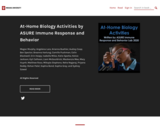
These activities were written by students in the ASURE Immune Response and Behavior Lab at Indiana University Bloomington. Each “chapter” shows an activity designed to introduce kids to a biology-related topic, which can be taught and led by their parents all with common household items. We hope that they’re helpful and fun for you to complete with your kids!
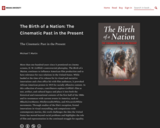
More than one hundred years since it premiered on cinema screens, D. W. Griffith’s controversial photoplay, The Birth of a Nation, continues to influence American film production and to have relevance for race relations in the United States. While lauded at the time of its release for its visual and narrative innovations and a box office hit with film audiences, it provoked African American protest in 1915 for racially offensive content. In this collection of essays, contributors explore Griffith’s film as text, artifact, and cultural legacy and place it into both the historical and transnational contexts of the first half of the 1900s and its resonances with current events in America, such as #BlackLivesMatter, #HollywoodSoWhite, and #OscarsSoWhite movements. Through studies of the film’s reception, formal innovations in visual storytelling, and comparisons with contemporary movies, this work challenges the idea the United States has moved beyond racial problems and highlights the role of film and representation in the continued struggle for equality.
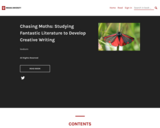
The essay is divided into Fantastic Philologies and Strange Structures to focus on certain elements of style at a time. The goal of all this, essaying business, is to develop a foundation upon which a fantastic mode, or a style guide, or something, may be built. While the writing beyond is analyzing the literary characteristics of the texts, my goal is to formulate a more developed theory on creating works with high literary value. Fantastic Philologies formulates a way to apply an extremely academic concept to an extremely fantastic foundation of a certain genre. Strange Structures ties in the literary techniques of Weird fantastic fiction. This overall creates a suite of options for analyzing the literary value of a piece of Fantasy.
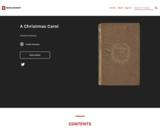
The text of "A Christmas Carol," in Pressbooks form.

Losing a parent can be a devastating experience for any child, but there are specific struggles that accompany early maternal loss for the daughter. Author Hope Edelman, who lost her mother to breast cancer, researches and writes extensively on this topic. Using Edelman as the foundation, this paper will explore how maternal loss during childhood and adolescence impacts women throughout their lifetime, from teenage identity struggles to becoming mothers themselves.
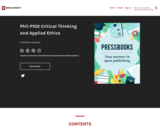
As an “applied ethics” course, the goal is to help you understand the role that ethical (and other) values play in our lives, and how argumentation that involves values both depends on and differs from reasoning about non-evaluative matters. For even if agreement about matters of value is sometimes challenging, it is possible to think critically in ethical matters and to have better and worse arguments for our beliefs. Gaining proficiency in this sort of critical thinking isn’t just an academic need — it will help you understand and engage the world around you and be able to resist those who either intentionally or unintentionally would deceive you. This course is driven by concrete scenarios and real-world issues we face today, but it is framed by 2500 years of Western philosophy and the conceptual and analytical tools developed in this tradition. Thus, the course provides a good introduction to philosophy, and it will hopefully encourage some of you to pursue further study within the philosophy department.
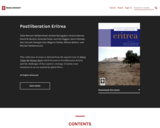
This collection of essays is derived from the special issue of Africa Today 60 (Winter 2013) which focused on Postliberation Eritrea and the challenges of the country's strategy of nation-state formation in an era marked by global flows.
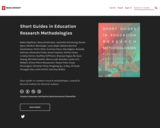
Short guides in common research methodologies, created by doctoral students for doctoral students.